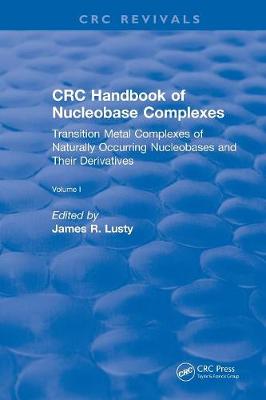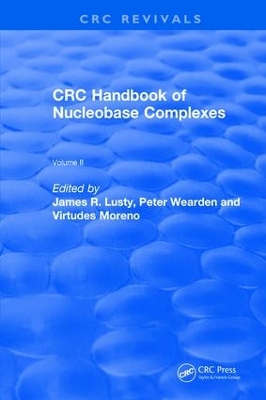CRC Press Revivals
2 total works
Handbook of Nucleobase Complexes
by James R. Lusty, P. Wearden, and V. Moreno
This handbook describes methods of preparation, characterization, toxicity, and therapeutic indices of transition metal complexes of the naturally occurring heterocyclic nucleobases and their derivatives. Modes of coordination are listed together with the relevant spectral data and major methods of investigation. Where appropriate, the spectrum of the sample is included in the pertinent section on spectroscopy. Data on the uncomplexed bases, such as solubility, pK, accepted structure(s) in the solid state and solutions, and the natural occurrence of the base are also included.
Volume II of this work provides the spectroscopic data to accompany Volume I. Volume II is divided into two sections: Section 1 summarizes the data and Section 2 is comprised of figures. In Section 1, the complexes are arranged according to the method of study. In Section 2, figures are listed by base type and follow the sequence of Volume I, mainly complexes of the pyrimidine bases, nucleosides and nucleotides, and then purine bases, nucleosides, and nucleotides.

